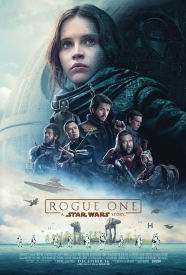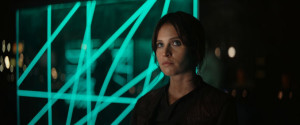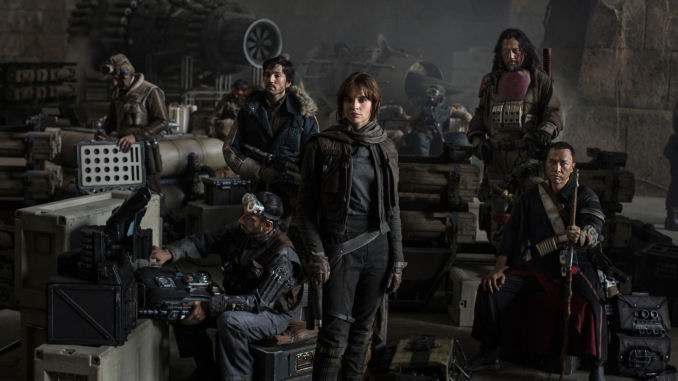 Perhaps an even bigger gamble than Disney’s acquisition of Lucasfilm and relaunching the beloved Star Wars franchise with a new trilogy of films furthering the saga of the Skywalker family in a war torn galaxy far away was the decision to create films outside of that story but still set in the same galaxy. The first of these films, Rogue One: A Star Wars Story, is proof that it was a gamble worth taking, paying off handsome creative dividends that enrich the franchise in ways that perhaps the main films can not.
Perhaps an even bigger gamble than Disney’s acquisition of Lucasfilm and relaunching the beloved Star Wars franchise with a new trilogy of films furthering the saga of the Skywalker family in a war torn galaxy far away was the decision to create films outside of that story but still set in the same galaxy. The first of these films, Rogue One: A Star Wars Story, is proof that it was a gamble worth taking, paying off handsome creative dividends that enrich the franchise in ways that perhaps the main films can not.
Rogue One serves as something of a prequel to the very first Star Wars, telling the story of the rag tag group of Rebel spies who steal the plans for the Empire’s new secret weapon, the planet destroying Death Star. As such, there are certainly a number of tie-ins to the original film. Some which have been revealed in the advertising lead up to the film and some of which that have not. With the exception of one moment, none of it really comes off as fan service and sit should be interesting to see how some of these moments were managed once the film has been out for a while and director Gareth Edwards and his crew can begin talking about how they were achieved.
It has oft been noted that Star Wars‘s opening onscreen text “A long time ago in a galaxy far, far away…” distinctly sets up the films as something of a legend or a fairy tale. In a way that is very true, especially in how the good guys are definitely good and the bad guys are definitely bad. But that white and black moral certitude is absent from Rogue One. Here, in a very real fog of war, things are numerous shades of gray. We see that the good guys, the Rebellion being fought against the evil Galactic Empire, is divided by factions who disagree over the tactics they should be taking in their struggle for freedom. The idea of political assassination is discussed as something that has been done in the past and is still considered a viable option. As such, Rogue One certainly ranks just below the best film of the franchise, The Empire Strikes Back. But where that film had an emotional complexity missing from the other films, Rogue One has a moral complexity that illustrates that even in a galaxy far away, war is still hell.
 While exciting and thematically more complex than most of the entries in the franchise, Rogue One is not without a few problems. The film’s first twenty to to thirty minutes bounce us from planet to planet introducing us to the main cast of characters. But once everyone is gathered together for their Dirty Dozen-style mission the film snaps into a single minded focus and gathers momentum towards an finale that should not leave any fan of the franchise wanting. With juggling as many characters as the films does, some are bound to be underserved by the script in terms of backstory. Two characters in particular get only the briefest of backgrounds mentioned on screen, but if you aren’t as immersed in the minutia of the Star Wars universe as others may be, you may not be able to fully decode the information.
While exciting and thematically more complex than most of the entries in the franchise, Rogue One is not without a few problems. The film’s first twenty to to thirty minutes bounce us from planet to planet introducing us to the main cast of characters. But once everyone is gathered together for their Dirty Dozen-style mission the film snaps into a single minded focus and gathers momentum towards an finale that should not leave any fan of the franchise wanting. With juggling as many characters as the films does, some are bound to be underserved by the script in terms of backstory. Two characters in particular get only the briefest of backgrounds mentioned on screen, but if you aren’t as immersed in the minutia of the Star Wars universe as others may be, you may not be able to fully decode the information.
With Rogue One, MG becomes the first composer not named John Williams to score a live action Star Wars film. G has shown a rather Chameleon-like ability to shape his style to suit the film he is composing music for. And that suits him well here as he slides into the classic European style of music that Williams has established for the franchise with such ease that even when he is not reprising portions of some of Williams’ most famous themes from the film it has hard to tell that he was not the man behind the music.





